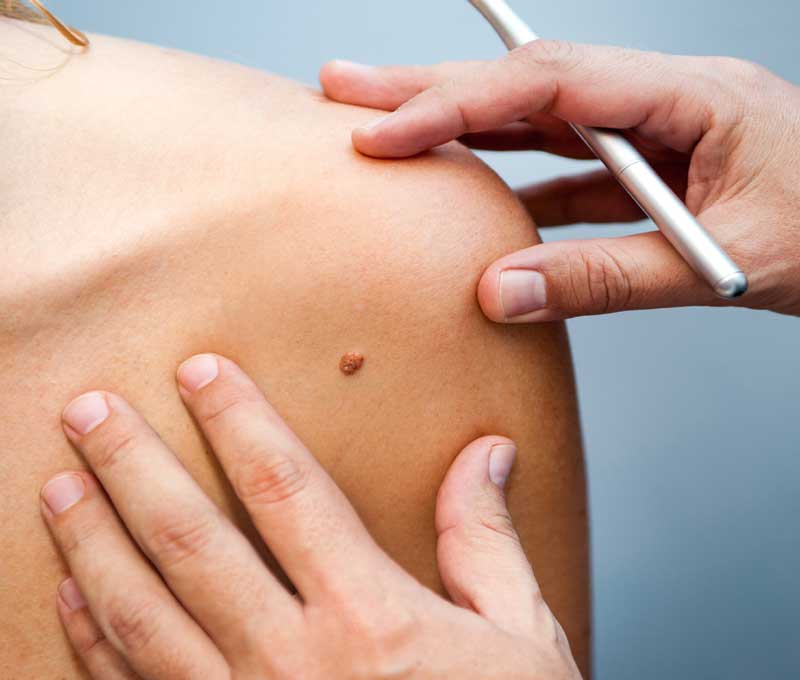The month of May is recognized as Skin Cancer Awareness month, and although it just passed, the topic of skin cancer and preventative care is relevant year-round, especially in an environment like Florida’s. As we head into the hot summer months, it is important to know the different types of skin cancer as well as the different factors that can lead to them.
Skin cancer rates are skyrocketing in the US, where more than 3.5 million skin cancers are diagnosed annually, and around the world. In fact, one in five Americans is diagnosed with skin cancer at some point in their lives. It is the most common form of cancer in the U.S. with more new cases than the combined incidence of cancers of the breast, prostate, lung and colon.
Skin cancer is a malignant condition that begins with the uncontrolled growth of abnormal cells. Recent studies show it can result as an accumulative effect from sun damage (90% in the case of nonmelanoma skin cancers!). Florida’s near year-round high temperatures means we are all at a higher risk!
What are the different types of Skin Cancer?
- Melanoma is the most deadly of all skin cancers (It causes more than 75% of skin cancer deaths). One American dies of melanoma almost every hour.
- Basal Cell Carcinoma (BCC) is the most frequently occurring skin cancer. Tough they are generally easily treated, BCCs tend to keep growing if untreated, and in rare cases can start to spread.
- Squamous Cell Carcinoma (SCC) is the second most frequently occurring skin cancer. An estimated 65% of them arise in lesions previously diagnosed as AKs. Most are easily treated, but if not removed, some can metastasize and spread to distant tissues and organs, becoming life threatening.
- Actinic Keratoses (AKs) are pre-cancers that can turn into SCC if left untreated. They are often an early stage in the development of skin cancer.
Early detection of skin cancer is key!
Cure rates are high, and recurrence rates are low for cancers that are caught and treated early! It is important to check for changes in size, shape and color of pigmented areas.
The Skin Cancer Foundation highly recommends an annual full-body skin exam by a dermatologist.
When it comes to preventative care and steps you can take, The Skin Cancer Foundation has a few recommendations:
- If you’re outside, which many of us usually are during the summer months, make sure you have a consistent shaded are you can use between 10 a.m. and 4 p.m. This helps avoid sunburns and keep you hydrated.
- Frequent tanning and use of tanning beds should be avoided.
- Use a broad spectrum (UVA/UVB) sunscreen with an SPF of 15 or higher every day. For extended outdoor activity, use a water-resistant, broad spectrum (UVA/UVB) sunscreen with an SPF of 30 or higher.
- Apply 1 ounce (2 tablespoons) of sunscreen to your entire body 30 minutes before going outside. Reapply every two hours or after swimming or excessive sweating.
- Examine your skin from head-to-toe at least once a month.
Lastly, understand your family history and other risk factors you might have. Risk factors for all types of skin cancer include skin that burns easily, blond or red hair, a history of excessive sun exposure and tanning bed use, a weakened immune system, and a family history of skin cancer. Also, melanoma survivors have an approximately nine-fold increased risk of developing another melanoma compared to the general population.
Of course, sunlight isn’t a bad thing, but just like everything else, too much of it can lead to skin problems down the road. With summer vacations, beach trips, and long days at amusement parks coming up the next few months, be sure you are taking the proper steps to prevent possible skin cancer down the road. For more stories and information regarding skin cancer and skin health, be on the lookout for next month’s Central Florida Health News, the annual Skin Care edition. Thank you to Dr. Michael Steppie, from Associates in Dermatology for supplying much of the information above. Associates in Dermatology is celebrating their 30th year anniversary as a company this month.
